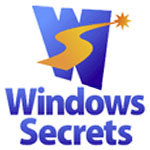PC Pitstop is proud to welcome our friends at Windows Secrets as guest contributors. The weekly Windows Secrets Newsletter brings you essential tips for Windows, applications, and computing on the Internet.

By Fred Langa/Windows Secrets
Libraries — special-purpose virtual folders — can be confusing at first. But they are extremely handy, once you get the hang of them.
How to use Libraries is hard to describe but easier to understand when you see them in action — and that’s what this article will show you.
The Windows 7 Help file defines libraries this way:
|
“… [A] library is similar to a folder. For example, when you open a library, you’ll see one or more files. However, unlike a folder, a library gathers files that are stored in several locations. This is a subtle, but important, difference. Libraries don’t actually store your items. They monitor folders that contain your items, and let you access and arrange the items in different ways.” |
OK, but that doesn’t answer the question: what can you actually do with libraries? What’s the real point of them?
Maybe I’m a slow learner, but it took several “Aha!” moments before I finally caught on.
The first moment was when I assembled a library of all my music files, which were scattered across several networked PCs. Without copying or moving any files at all, my new music library gave me centralized access to all the music on all the PCs. I could sort the library’s aggregated contents by album, artist, song, rating, date, bitrate, and more. When I sorted the music by name, I could see instantly that I had multiple copies of the same song in different places. When I sorted by the ratings I had assigned, I could select all the five-star songs, from across all the distributed locations, for local playback. And so on, all without moving or copying the original files. Aha!
Another moment arrived while I was working with digital photos. I have thousands, and they’re primarily sorted by year — 2011, 2010, 2009, and so on. I realized I could create, say, a centralized vacation-photos library that would contain just vacation photos, even though those photos in reality would remain spread throughout many different annualized folders. Aha!
Libraries work with any kind of file, not just music and photos. I use libraries for work: I often have more than one PC going, with different parts of different projects on different PCs. I use libraries to gather the distributed materials into one central, virtual location.
And although Microsoft doesn’t play this up, one of the most powerful features of Libraries is enhanced searching: when you perform a Windows Search within a library, you search that library’s full contents, even if the files actually reside in a number of different folders — or even on different systems!
There’s more, but the best way to learn about libraries is actually to work with them. I invite you to try the following step-by-step procedure on your PC as you read through this article — don’t worry; everything thing I describe here is safe and nondestructive.
Getting started: learning library basics
If you’re just beginning to use libraries or you already work with them but want a quick refresher, Microsoft’s four-minute screen-capture video, “Organizing with Windows 7 Libraries: Overview,” covers the basics.
MS TechNet offers good intermediate-level information in its Library FAQ and its “Windows 7 Libraries: Walkthrough.”
If you prefer a more technical primer, try the MSDN article, “Introducing Libraries.”
For the purposes of this demonstration, I created three example folders that I can add to a new library. I put each folder in a different place so you can see how a library aggregates folder content. To help keep things clear, I gave the demo folders blindingly obvious names. One is called SomeFiles and is in my Documents folder. Another folder, SomeGraphics, is in my Pictures folder. A third, SomeDifferentFiles, is a folder on my Desktop.
To work along with me as you read this article, you also need to select three folders in different places. (Why three? Because it’s enough for you to see what the Libraries feature is all about, without going overboard.) It doesn’t matter what the folders contain or what they’re named or even where they are; you can select folders from any location to which you have access, including networked drives — that is, drives on other PCs.
For simplicity, my demo folders are small, but yours need not be. In fact, libraries are most useful when you’re dealing with large folders with tons of files.
After you mentally select your three folders, it’s time to create a library.
Article continued here.




